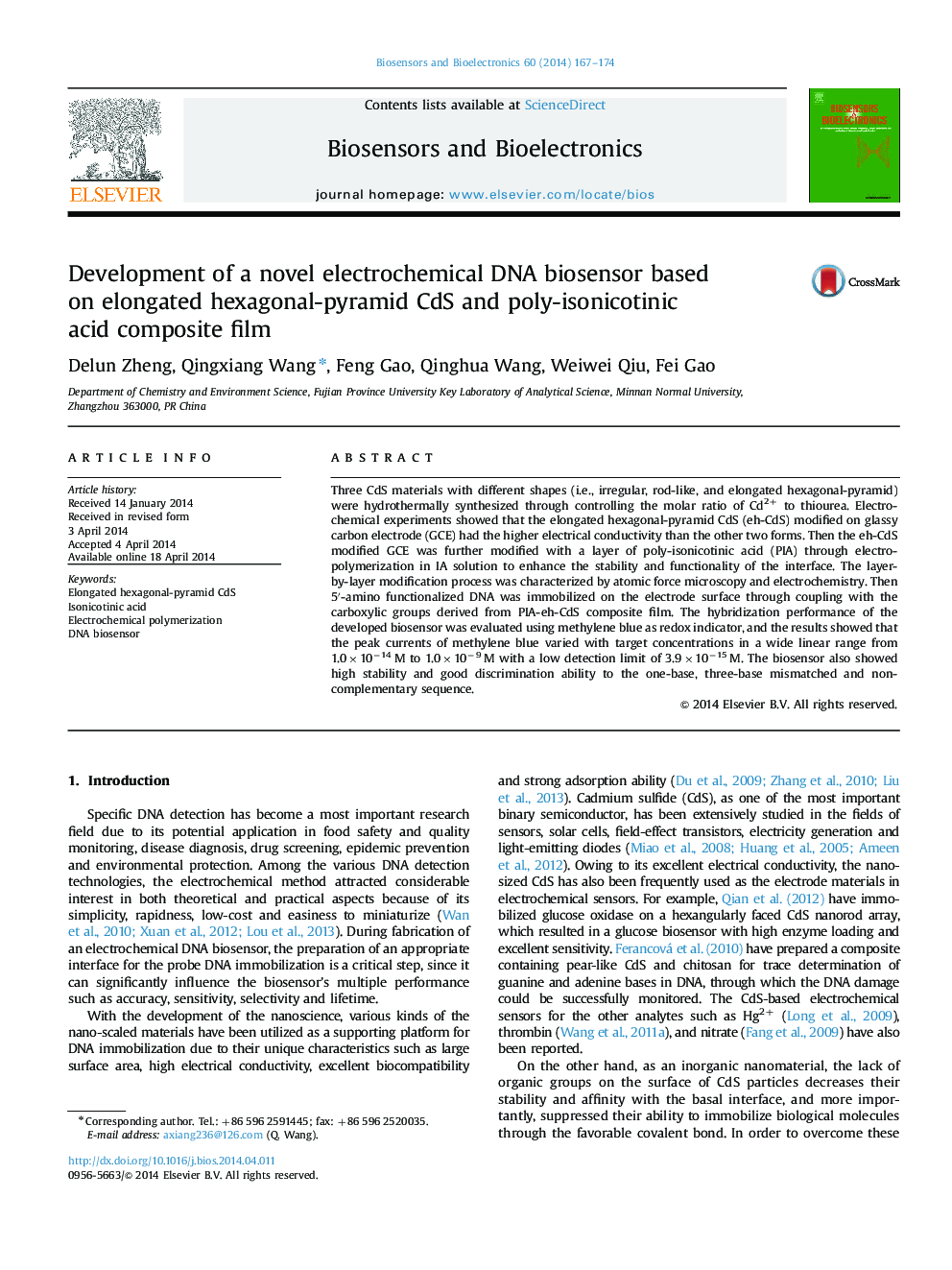| Article ID | Journal | Published Year | Pages | File Type |
|---|---|---|---|---|
| 866430 | Biosensors and Bioelectronics | 2014 | 8 Pages |
•Three kinds of CdS with different shapes were synthesized.•The elongated hexagonal-pyramid CdS (eh-CdS) presented the highest conductivity.•A DNA biosensor was constructed using eh-CdS/poly-isonicotinic acid (PIA) as a platform.•Wide linear range (10 fM–1.0 nM) and low detection limit (3.9 fM) were achieved.
Three CdS materials with different shapes (i.e., irregular, rod-like, and elongated hexagonal-pyramid) were hydrothermally synthesized through controlling the molar ratio of Cd2+ to thiourea. Electrochemical experiments showed that the elongated hexagonal-pyramid CdS (eh-CdS) modified on glassy carbon electrode (GCE) had the higher electrical conductivity than the other two forms. Then the eh-CdS modified GCE was further modified with a layer of poly-isonicotinic acid (PIA) through electro-polymerization in IA solution to enhance the stability and functionality of the interface. The layer-by-layer modification process was characterized by atomic force microscopy and electrochemistry. Then 5′-amino functionalized DNA was immobilized on the electrode surface through coupling with the carboxylic groups derived from PIA-eh-CdS composite film. The hybridization performance of the developed biosensor was evaluated using methylene blue as redox indicator, and the results showed that the peak currents of methylene blue varied with target concentrations in a wide linear range from 1.0×10−14 M to 1.0×10−9 M with a low detection limit of 3.9×10−15 M. The biosensor also showed high stability and good discrimination ability to the one-base, three-base mismatched and non-complementary sequence.
